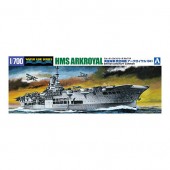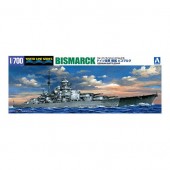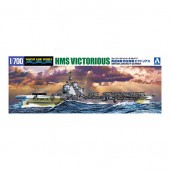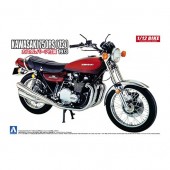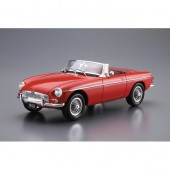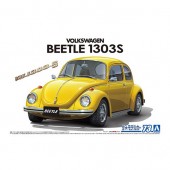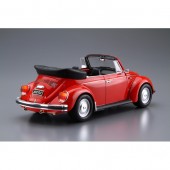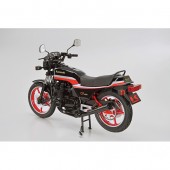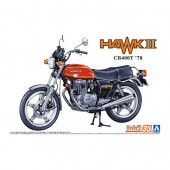You have no items in your shopping cart.
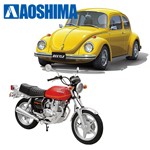
Aoshima
HMS Arkroyal
£34.99

British Aircraft Carrier HMS Ark Royal 1941
HMS Ark Royal was the second aircraft carrier of the Royal Navy following HMS Hermes.
Ark Royal was completed in November 1938, sunk on the 14th November 1941.
She had two hangar deck levels to carry a large number of aircraft.
Ark Royal served in some of the most active naval theatres of WWII and was involved in the search for the German battleship Bismarck, in which her Swordfish sunk the German battleship.
She then served in escorting the Malta convoys
Scale 1:700 Learn More
HMS Ark Royal was the second aircraft carrier of the Royal Navy following HMS Hermes.
Ark Royal was completed in November 1938, sunk on the 14th November 1941.
She had two hangar deck levels to carry a large number of aircraft.
Ark Royal served in some of the most active naval theatres of WWII and was involved in the search for the German battleship Bismarck, in which her Swordfish sunk the German battleship.
She then served in escorting the Malta convoys
Scale 1:700 Learn More
Bismarck
£32.99

Bismarck German Battleship
Bismarck was the first of two Bismarck-class battleships built for Nazi Germany's Kriegsmarine. Named after Chancellor Otto von Bismarck, the ship was laid down at the Blohm & Voss shipyard in Hamburg in July 1936 and launched in February 1939. Work was completed in August 1940, when she was commissioned into the German fleet. Bismarck and her sister ship Tirpitz were the largest battleships ever built by Germany, and two of the largest built by any European power.
Scale 1:700 Learn More
Bismarck was the first of two Bismarck-class battleships built for Nazi Germany's Kriegsmarine. Named after Chancellor Otto von Bismarck, the ship was laid down at the Blohm & Voss shipyard in Hamburg in July 1936 and launched in February 1939. Work was completed in August 1940, when she was commissioned into the German fleet. Bismarck and her sister ship Tirpitz were the largest battleships ever built by Germany, and two of the largest built by any European power.
Scale 1:700 Learn More
HMS Victorious
£34.99

HMS Victorious British Aircraft Carrier
HMS Victorious was the third Illustrious-class aircraft carrier after Illustrious and Formidable. Ordered under the 1936 Naval Programme, she was laid down at the Vickers-Armstrong shipyard at Newcastle upon Tyne in 1937 and launched two years later in 1939. Her commissioning was delayed until 1941 due to the greater need for escort vessels for service in the Battle of the Atlantic.
Her service in 1941 and 1942 included famous actions against the battleship Bismarck, several Arctic convoys, and Operation Pedestal. She was loaned to the United States Navy in 1943 and served in the south west Pacific as part of the Third Fleet. Victorious contributed to several attacks on the Tirpitz. The elimination of the German naval threat allowed her redeployment first to the Eastern Fleet at Colombo and then to the Pacific for the final actions of the war against Japan.
Scale 1:700 Learn More
HMS Victorious was the third Illustrious-class aircraft carrier after Illustrious and Formidable. Ordered under the 1936 Naval Programme, she was laid down at the Vickers-Armstrong shipyard at Newcastle upon Tyne in 1937 and launched two years later in 1939. Her commissioning was delayed until 1941 due to the greater need for escort vessels for service in the Battle of the Atlantic.
Her service in 1941 and 1942 included famous actions against the battleship Bismarck, several Arctic convoys, and Operation Pedestal. She was loaned to the United States Navy in 1943 and served in the south west Pacific as part of the Third Fleet. Victorious contributed to several attacks on the Tirpitz. The elimination of the German naval threat allowed her redeployment first to the Eastern Fleet at Colombo and then to the Pacific for the final actions of the war against Japan.
Scale 1:700 Learn More
Kawasaki 750RS
£29.99

The Kawasaki Z750 (another name: Z2) is a Japanese sports motorcycle that was first presented to the public in 1973. Kawasaki Z750 was developed and put into production in order to significantly strengthen Kawasaki's position in the segment. The motorcycle (RS series) was powered by a completely new 746cc engine with completely redesigned cylinders and pistons, which was similar to the 900cc engine on the Z1. Thanks to this new power unit, the Kawasaki Z750 RS was characterized by very good performance and turned out to be a hit on the market. In 1978, the Kawasaki Z750FX motorcycle was launched, which was based on many solutions from the RS version, and had a very similar style and design. The main difference, however, was in the engine, which used many new solutions, and above all, its power increased from 69 hp to 74 hp.
Scale 1:12 Learn More
Scale 1:12 Learn More
MG-B Mk-2
£31.99

The MGB is a two-door sports car manufactured and marketed from 1962 until 1980 by the British Motor Corporation (BMC), later the Austin-Morris division of British Leyland, as a four-cylinder, soft-top sports car. It was announced and its details first published on 19 September 1962.[3] Variants include the MGB GT three-door 2+2 coupé (1965–1980), the six-cylinder sports car and coupé MGC (1967–69), and the eight-cylinder 2+2 coupé, the MGB GT V8 (1973–76).
Replacing the MGA in 1962, production of the MGB and its variants continued until 1980. Sales for the MGB, MGC and MGB GT V8 combined totaled 523,836 cars. After a 12-year hiatus, the MGB re-entered production as the heavily modified MG RV8 with a limited run of 2,000 cars before finally being replaced in 1995 by the MG F.
Scale 1:24 Learn More
Replacing the MGA in 1962, production of the MGB and its variants continued until 1980. Sales for the MGB, MGC and MGB GT V8 combined totaled 523,836 cars. After a 12-year hiatus, the MGB re-entered production as the heavily modified MG RV8 with a limited run of 2,000 cars before finally being replaced in 1995 by the MG F.
Scale 1:24 Learn More
Range Rover Classic
£42.99

The Range Rover Classic is a 4x4, mid-size Sport utility vehicle series produced from 1969 to 1996 – initially by the Rover (later Land Rover) division of British Leyland, and latterly by the Rover Group.
The first generation of vehicles produced under the Range Rover name, it was built as a two-door model for its first 11 years, until a four-door also became available in 1981. The Range Rover then successfully moved upmarket during the 1980s, and remarkably debuted in the U.S. as a 17-year old model at the 1987 Los Angeles Auto Show.[2]
Availability of the two-door version was restricted from 1984, but it remained in production for some markets until 1994, when the second generation was launched. From that moment, Land Rover rebranded the original model under the term "Range Rover Classic", to distinguish it from its new P38A successor, when the two were briefly built alongside, and applied the name retrospectively to all first-generation Range Rovers
Scale 1:24 Learn More
The first generation of vehicles produced under the Range Rover name, it was built as a two-door model for its first 11 years, until a four-door also became available in 1981. The Range Rover then successfully moved upmarket during the 1980s, and remarkably debuted in the U.S. as a 17-year old model at the 1987 Los Angeles Auto Show.[2]
Availability of the two-door version was restricted from 1984, but it remained in production for some markets until 1994, when the second generation was launched. From that moment, Land Rover rebranded the original model under the term "Range Rover Classic", to distinguish it from its new P38A successor, when the two were briefly built alongside, and applied the name retrospectively to all first-generation Range Rovers
Scale 1:24 Learn More
VW Beetle 1303S
£26.99

By the end of the 1960s, the venerable Beetle was struggling to keep up with the competition, it’s cute looks and quirky ways not enough to keep up with the competition from Europe and Japan.
VW’s answer was the Super Beetle of 1971 with a host of safety and comfort mods. With a longer wheelbase to give a more stable ride, it also got disc brakes, improved steering and Macpherson strut suspension that improved the handling and doubled the luggage capacity. Crash safety was improved while both front and rear screens were enlarged for better visibility. Outside, it had a lengthened bonnet, fatter wings, a redesigned engine lid and bigger ‘Elephant feet’ rear lights.
Power came from a new 1300cc engine or, for the more sporting driver, a 1600cc flat-four of ‘twin port’ induction design with a higher final drive ratio. It was the last of the Beetles to be manufactured in Wolfsburg, Germany, before production moved to Yugoslavia in 1974.
Scale 1:24 Learn More
VW’s answer was the Super Beetle of 1971 with a host of safety and comfort mods. With a longer wheelbase to give a more stable ride, it also got disc brakes, improved steering and Macpherson strut suspension that improved the handling and doubled the luggage capacity. Crash safety was improved while both front and rear screens were enlarged for better visibility. Outside, it had a lengthened bonnet, fatter wings, a redesigned engine lid and bigger ‘Elephant feet’ rear lights.
Power came from a new 1300cc engine or, for the more sporting driver, a 1600cc flat-four of ‘twin port’ induction design with a higher final drive ratio. It was the last of the Beetles to be manufactured in Wolfsburg, Germany, before production moved to Yugoslavia in 1974.
Scale 1:24 Learn More
VW Beetle Cabriolet
£26.99

In 1948, Wilhelm Karmann bought a standard Beetle and converted it into a four-seater convertible. After successfully presenting it at VW in Wolfsburg, Karmann began production of the Volkswagen Beetle Cabriolet in 1949. After a number of stylistic and technical alterations made to it (corresponding to the many changes VW made to the Beetle throughout its history) the last of 331,847 cabriolets came off the conveyor belt on 10th January 1980, bringing with it the end of an era. In 1971, alongside continued production of the standard Beetle, a variant which featured MacPherson strut front suspension and a re-designed front end was introduced which was officially known and marketed in Europe as the 'VW 1302' from 1971 to 1972, and 'VW 1303' from 1973 onwards.
Scale 1:24 Learn More
Scale 1:24 Learn More
Kawasaki KZ400M
£29.99

Custom muffler, side cover, tail cowl, & other custom parts are included
Reproduction of a 1982 model Z400GP
- Rubber tyres for added texture
- Vinyl pipes are used for wires & hoses
Scale 1:12
Learn MoreHonda CB400T Hawk-II
£26.99

Reproduction of the 1978 model, commonly known as the square tank
- Rubber tyres for better texture
- Wires & hoses are reproduced with vinyl pipes
Scale 1:12
Learn More



